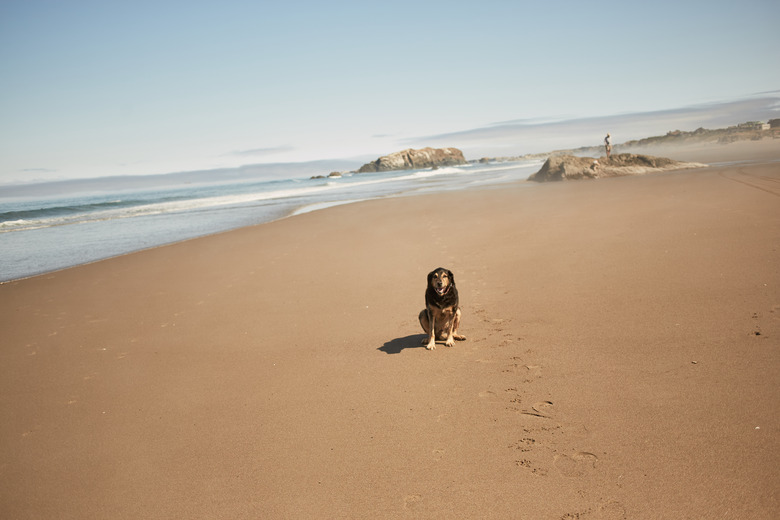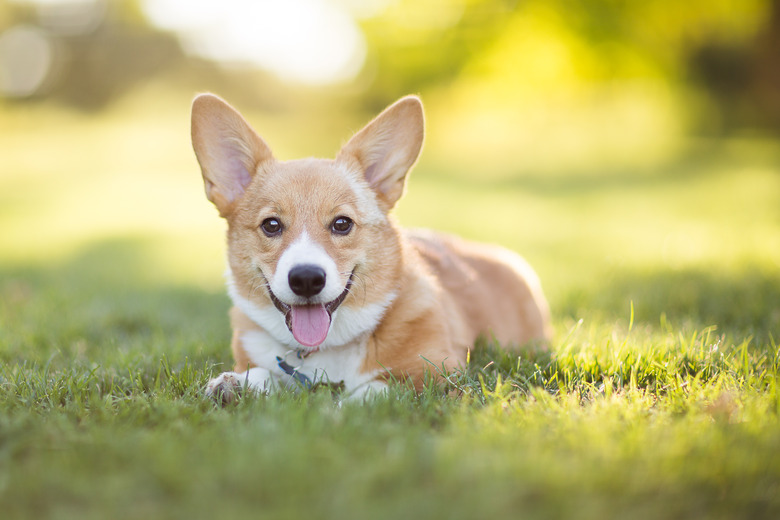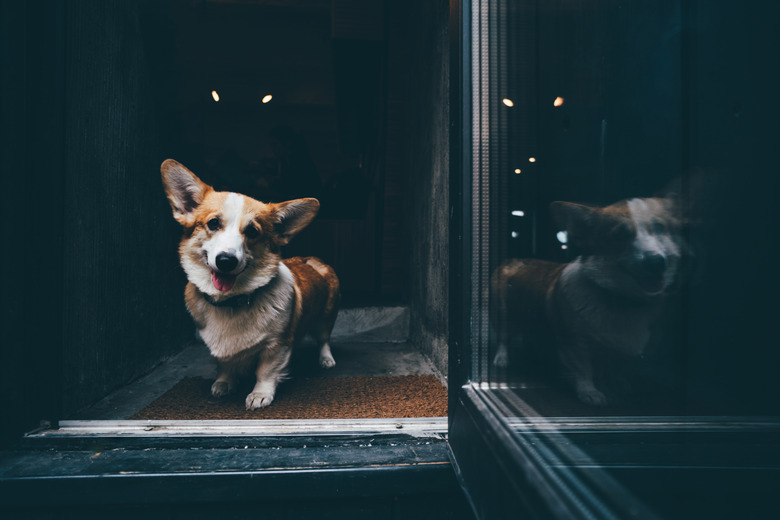How To Train A Dog To Stay
Stay can be a life-saving behavior and is extremely important to work on with your dog. We've compiled a step-by-step list of instructions to make it as easy as possible for you to teach a reliable stay that works when the front door is open, when their favorite friend is across the street, and when you're 100 ft away!
Basic rules for teaching stay
Basic rules for teaching stay
Rule #1: Don't use a hand signal! The "hand in your dog's face for teaching stay" is so 2007. It's important that your dog hears the verbal cue "stay" and doesn't move. We don't want them to rely on seeing your hand in their face!
Rule #2: Don't repeat the verbal cue "stay"! The cue becomes incredibly useless if we have to say it over and over again in order for our dogs to be successful. It's important that we teach our dog to listen to it the first time. You don't want to be that person saying "stay", "stay", "staaaaayyyyy!"
Rule #4: Just as important as teaching a good stay, is teaching a good release word! Your dog needs to understand when they're all done with staying put. Some popular release words are: free, all done, and okay.
Rule #5: Keep your training sessions short and sweet! It can be hard for dogs to stay still for too long when they're first learning. Keep training sessions fun so your dog begs for more.
Rule #6: There is nothing to gain from scolding your dog when he breaks a stay. Simply reset, lower criteria, and succeed the next time!
Stay instructions: the three D's
Stay instructions: the three D's
Now you're ready to start training a rock-solid stay with positive reinforcement. Have your treats ready, warm up your dog's sit and down cues, and then follow the instructions below.
1. Duration
Before we can start walking away from our dogs and expecting them to stay put, we have to build duration! Here is how you gradually increase the length of time your dog can hold a position.
- Ask your dog for a sit or down.
- Say the word "stay".
- Count to 3.
- Click or say yes and bring a treat to their mouth.
- Give your release word and encourage your dog to get up.
- Repeat while gradually increasing the number you count to.
Once your dog can stay for 10-15 seconds, you're ready to move on to step 2.
2. Distance
Now your dog is ready to start seeing you move! Here is how you gradually start taking steps away from your dog.
- Ask your dog for a sit or down.
- Say the word "stay".
- Take one step back.
- Return to the front of your dog.
- Click or say yes and bring a treat to their mouth.
- Give your release word and encourage your dog to get up.
- Repeat while gradually increasing the number of steps away you take.
Always return to your dog and reinforce them in position. For now, you will not practice stay and come at the same time. That will only build a strong recall, but a shaky stay. Once your dog can stay for about 5 steps, you're ready to move on to step 3.
3. Distraction
Now for the fun part! Slowly start building in real-life distractions. This could be anything from turning your back, walking a circle around your dog, opening the front door, grabbing their leash, etc. The key here is to break the distraction down into tiny, achievable pieces. We'll use opening the front door as an example. We recommend having your dog on a long line for the exercise—just in case!
- Ask your dog a sit or a down.
- Say the word "stay".
- Reach toward the front door.
- Click or say yes and bring a treat to their mouth.
- Say the word "stay".
- Jiggle the front door handle.
- Click or say yes and bring a treat to their mouth.
- Say the word "stay".
- Open the door just slightly.
- Click or say yes and bring a treat to their mouth.
- Give release word and encourage your dog to get up and possibly go for a walk out the front door!
- Repeat until you're able to completely open the door, all the while lowering criteria if your dog is getting up or breaking their stay.
With these simple steps, you can teach your dog to stay anywhere, anytime, around any distraction! All it takes is a little practice, patience, and reinforcement! Dog training should be fun and a part of your daily life.


